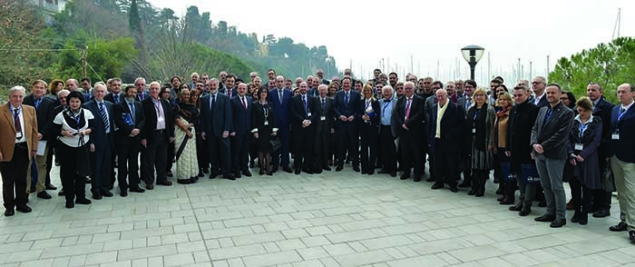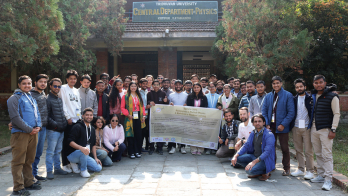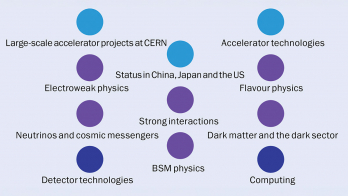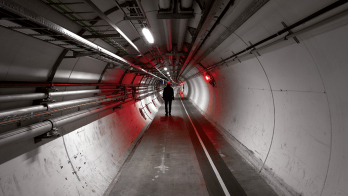
In the autumn of 2016, at a meeting in Dubrovnik, Croatia, trustees of the World Academy of Art and Science discussed a proposal to create a large international research institute for South-East Europe. The facility would promote the development of science and technology and help mitigate tensions between countries in the region, following the CERN model of “science for peace”. A platform for internationally competitive research in South-East Europe would stimulate the education of young scientists, transfer and reverse the brain drain, and foster greater cooperation and mobility in the region.
The South-East Europe initiative received first official support by the government of Montenegro, independent of where the final location would be, thanks to the engagement of Montenegro science minister Sanja Damjanovic, who is also a physicist with a long tradition working at CERN.
On 25 October last year at a meeting at CERN, ministers of science or their representatives from countries in the region signed a Declaration of Intent (DOI) to establish a South-East Europe International Institute for Sustainable Technologies (SEEIIST) with the above objectives. The initial signatories were Albania, Bosnia and Herzegovina, Bulgaria, Kosovo*, The Former Yugoslav Republic of Macedonia, Montenegro, Serbia and Slovenia. Croatia agreed in principle, while Greece participated as an observer. CERN’s role was to provide a neutral and inspirational venue for the meeting.
The signature of the DOI was followed by a scientific forum on 25–26 January at the International Centre for Theoretical Physics (ICTP) in Trieste, Italy, held under the auspices of UNESCO, the International Atomic Energy Agency (IAEA) and the European Physical Society. The forum attracted more than 100 participants ranging from scientists and engineers at universities to representatives of industry, government agencies and international organisations including ESFRI and the European Commission. Its aim was to present two scientific options for SEEIIST: a fourth-generation synchrotron light source that would offer users intense beams from infrared to X-ray wavelengths; and a state-of-the-art patient treatment facility for cancer using protons and heavy ions, also with a strong biomedical research programme. The concepts behind each proposal were worked out by two groups of international experts.

With SEEIIST’s overarching goal to be a world-class research infrastructure, the training of scientists, engineers and technicians is essential. Whichever project is selected, it will require several years of effort, during which people will be trained for the operation of the machines and user communities will also be formed. Capacity-building and technology-transfer activities will further trigger developments for the whole region, such as the development of powerful digital networks and big-data handling.
Reports and discussions from the ICTP forum have provided an important basis for the next steps. Representatives of IAEA declared an interest in helping with the training programme, while European Union (EU) representatives are also looking favourably at the project – potentially providing resources to support the preparation of a detailed conceptual design and eventual concrete proposal.
The initiative is gathering momentum. On 30 January the first meeting of the SEEIIST steering committee, chaired initially by the Montenegro science minister, took place in Sofia, Bulgaria. Sofia was chosen at the invitation of Bulgaria since it currently holds the EU presidency, and the meeting was introduced by Bulgarian president Rumen Radew, who expressed strong interest in SEEIIST and promised to support the initiative. Officials have underlined that a decision between the two scientific options should be taken as soon as possible – a task that we are now working towards.
SEEIIST wouldn’t be the first organisation to be inspired by the CERN model. The European Southern Observatory, European Molecular Biology Laboratory and the recently operational SESAME facility in Jordan – a third-generation light source governed by a council made up of representatives from eight members in the Middle East and surrounding region – each demonstrate the power of fundamental science to advance knowledge and bring people and countries together.
• This designation is without prejudice to positions on status and is in line with UNSC 1244/1999 and the ICJ opinion on the Kosovo Declaration of Independence.





